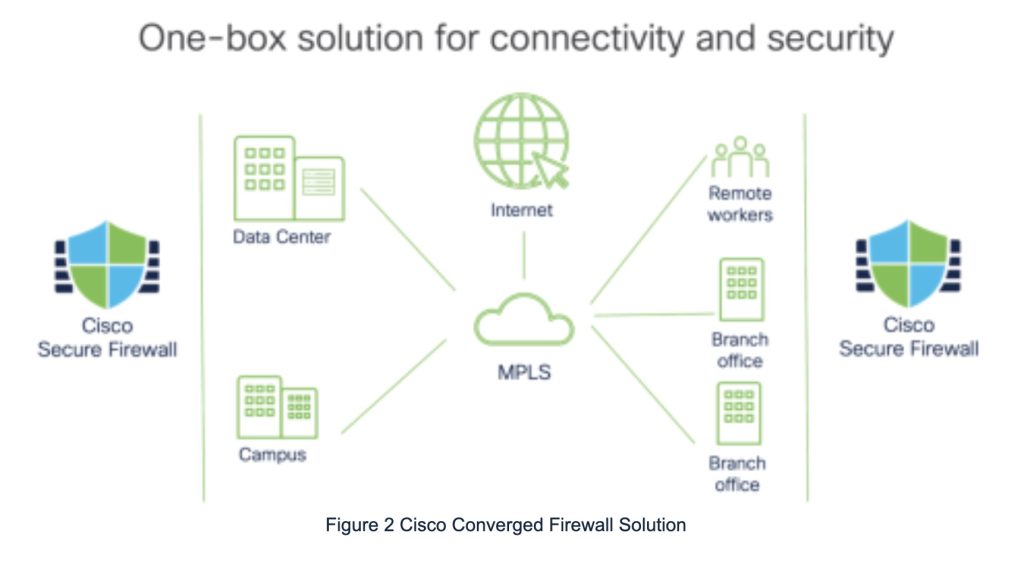
The way we work has fundamentally shifted, with hybrid and remote models becoming a widespread reality. This evolution brings tremendous benefits but also presents significant challenges for IT and security teams tasked with ensuring seamless access to applications and protecting sensitive data outside the traditional corporate perimeter.
Traditionally, network deployments often routed all internet traffic back to a central site through a perimeter firewall. While this provided security, backhauling traffic, especially for cloud and SaaS applications, often resulted in increased packet latency, drops, and jitter, leading to a poor user experience. This approach was also challenged by high costs, bandwidth utilization, and complex management of disparate security tools. The need for secure access and optimized performance for a distributed workforce in this increasingly interconnected environment is paramount.
Recognizing this significant shift, a modern approach is required that balances robust security with a superior user experience. This is where the convergence of firewall and SD-WAN capabilities comes to the forefront, simplifying branch deployments and enabling secure, elastic connectivity.
The Power of Convergence: What It Brings
Integrating firewall and SD-WAN functions into a single platform, such as the Cisco Secure Firewall, addresses many of the challenges posed by traditional architectures. This converged approach allows organizations to establish a strong security baseline at the branch while simplifying deployment and management. This is not just a matter of convenience; it’s a strategic move aligned with industry frameworks like Gartner’s Secure Access Service Edge (SASE) model. While SD-WAN is considered part of the broader SASE framework, the security components, known as Secure Service Edge (SSE) – encompassing Secure Web Gateways (SWG), Cloud Access Security Brokers (CASB), and Zero Trust Network Access (ZTNA) – constitute more than half of the SASE framework. Bringing firewall (often incorporating SWG/ZTNA functions) and SD-WAN together directly supports this unified vision.
A converged platform allows organizations to deploy core security functions alongside intelligent networking capabilities, improving both security and user experience. The Figure 2 illustrates Cisco’s approach to a converged security and SD-WAN solution, delivered as an all-in-one device and centrally managed through the Orchestrator.

Key capabilities supported by modern secure firewall platforms with integrated SD-WAN include:
- Simplified and Automated Deployment: Automating the setup of network topologies, such as branch-to-hub connections, through guided workflows or templates significantly reduces complexity and time compared to manual configurations. This is particularly important for scaling branch rollouts. Flexible virtual tunnel interfaces facilitate scalable and on-demand VPNs.
- Optimized Connectivity via Direct Internet Access (DIA): Optimized Connectivity via Direct Internet Access (DIA) allows organizations to streamline their network traffic by enabling branches to route internet-bound traffic directly, eliminating the need for backhauling. This approach is critical for efficient access to cloud applications such as Microsoft 365 and Salesforce. Leveraging intelligent routing based on policies, known as Policy-Based Routing (PBR), the device can identify specific applications, such as Webex or YouTube, and channel them through the optimum internet connection available. For the mission-critical applications, the system continuously monitors the quality of various
internet links in real-time, evaluating factors like jitter, packet loss, and delay. This enables automatic traffic switching to the link that currently offers the best performance.
- Streamlining Secure Connections to Headquarters Through Advanced Technology: In the context of simplifying secure connections to headquarters through secure branch tunnels, it is essential to create secure, encrypted tunnels (VPNs) for traffic that needs to be routed back to the main office or data center. The utilization of modern technologies, such as Dynamic Virtual Tunnel Interfaces (DVTIs), facilitates the establishment of connections for numerous branch offices linking back to a central hub.
- Integrated Security at the Edge: Modern solutions embed security functions like access control, threat detection, malware protection, and URL filtering directly into the branch device. Segmentation, potentially using security tags derived from user or device identity, is enforced at the network edge to control lateral movement and limit the blast radius of a breach. Integration with cloud-delivered security services provides multi-layered protection and a uniform policy for users regardless of their location.
- Enhanced Visibility and Threat Response: Gaining deep visibility into network traffic, user activity, and device posture, especially at the edge, is essential for enhancing security. By integrating this visibility with security intelligence and leveraging eXtended Detection and Response (XDR) platforms, organizations can achieve improved threat identification, streamline investigations, and automate response actions. This comprehensive approach ultimately enhances the security posture and resilience of the organization.
The Payoff: Benefits of Convergence
Adopting a converged firewall and SD-WAN solution offers significant advantages for businesses operating in today’s hybrid world:
- Improved User Experience: Applications, especially cloud ones, perform better due to local internet breakout and intelligent routing.
- Stronger Security Posture: Integrated threat protection and centralized policy enforcement secure the network edge effectively against a range of threats. It provides crucial defense against sophisticated threats targeting critical infrastructure.
- Reduced Complexity and Cost: Consolidating functions into fewer devices simplifies management, lowers operational overhead, and reduces the need for expensive backhauling.
- Increased Agility: Easier deployment and centralized management allow businesses to quickly adapt their network and security to changing needs.
- Enhanced Resilience: Features like automatic path monitoring and load balancing ensure connectivity remains stable.
Conclusion
The convergence of firewall and SD-WAN is more than just a technological trend; it’s a necessary evolution for businesses navigating the complexities of cloud adoption, remote work, and an increasingly challenging threat. By providing a unified platform for both intelligent networking and robust security right at the network edge, this approach simplifies operations, enhances performance, strengthens security, and builds a more resilient foundation for modern business connectivity.
Related Resources
https://www.cisco.com/c/en/us/support/security/defense-center/series.html#~tab-documents
https://www.youtube.com/watch?v=aOISS_VM3YI
https://www.cisa.gov/topics/cyber-threats-and-advisories/nation-state-cyber actors/russia/publications
Disclaimer: The author is completely responsible for the content of this article. The opinions expressed are their own and do not represent IEEE’s position nor that of the Computer Society nor its Leadership.